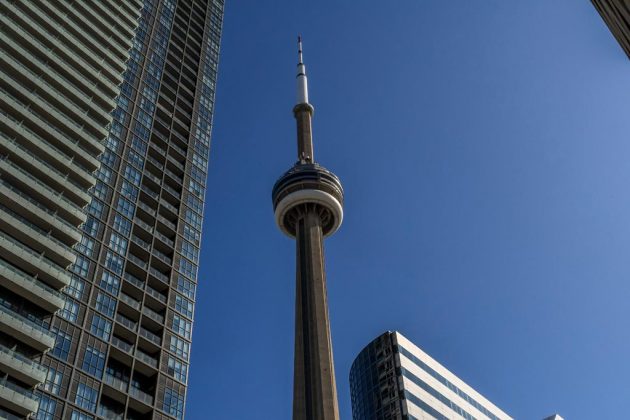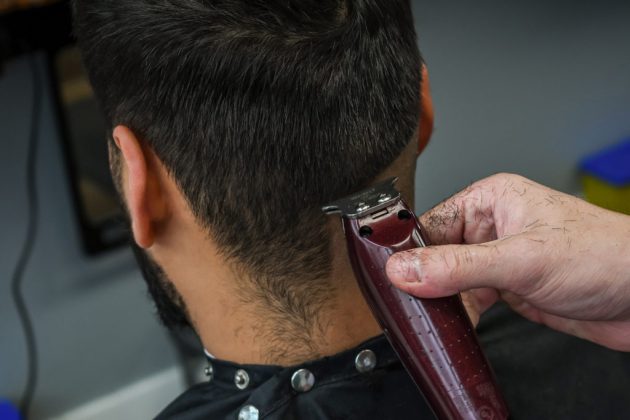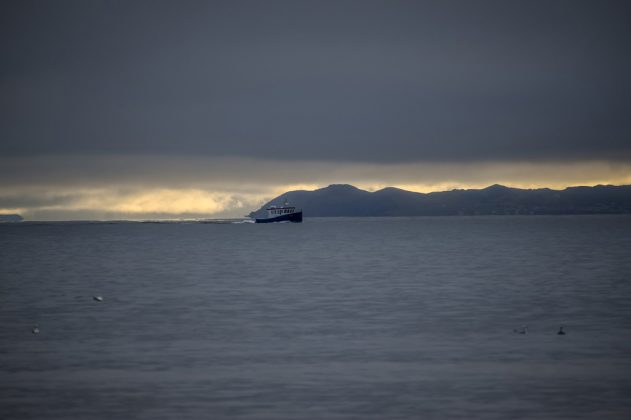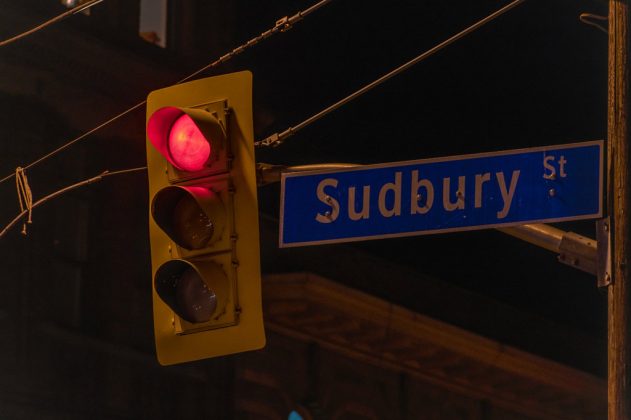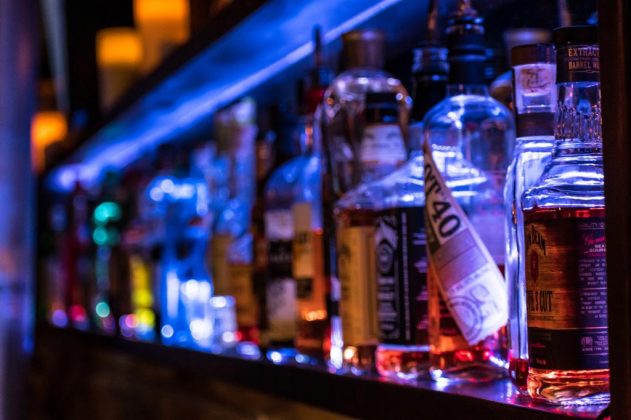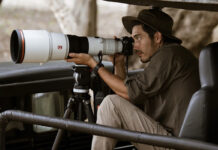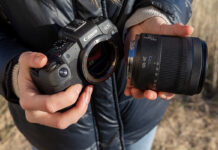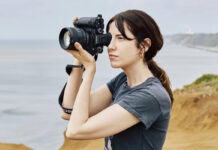
[Editor’s note: this review was made possible with the support of our partners at Ultimaxx that provided the Nikon Cameras to us for this article. For more details about Ultimaxx check their full assortment at Best Buy.]
Whether you are looking to graduate to DSLR photography or want to turn to something professional, Nikon has a lineup tp cover those bases.
That’s hardly a surprise. Nikon’s pedigree for DSLR cameras is already renowned, but knowing which one to pursue is the challenge, particularly if you are new to these types of cameras. They often look similar on the outside, with new or different features on the inside.
For this roundup, I looked at four different Nikon models—somewhat split in how to qualify them. The D7500 and D750 are the more entry-level and user-friendly models aimed at DSLR newcomers and amateurs. The D500 and D850 are the premium models built with the pro and serious amateur in mind.
To make it easier to follow along, I’ve not only split them in two, as noted above, but have covered them below in order from most entry-level to most premium and professional.
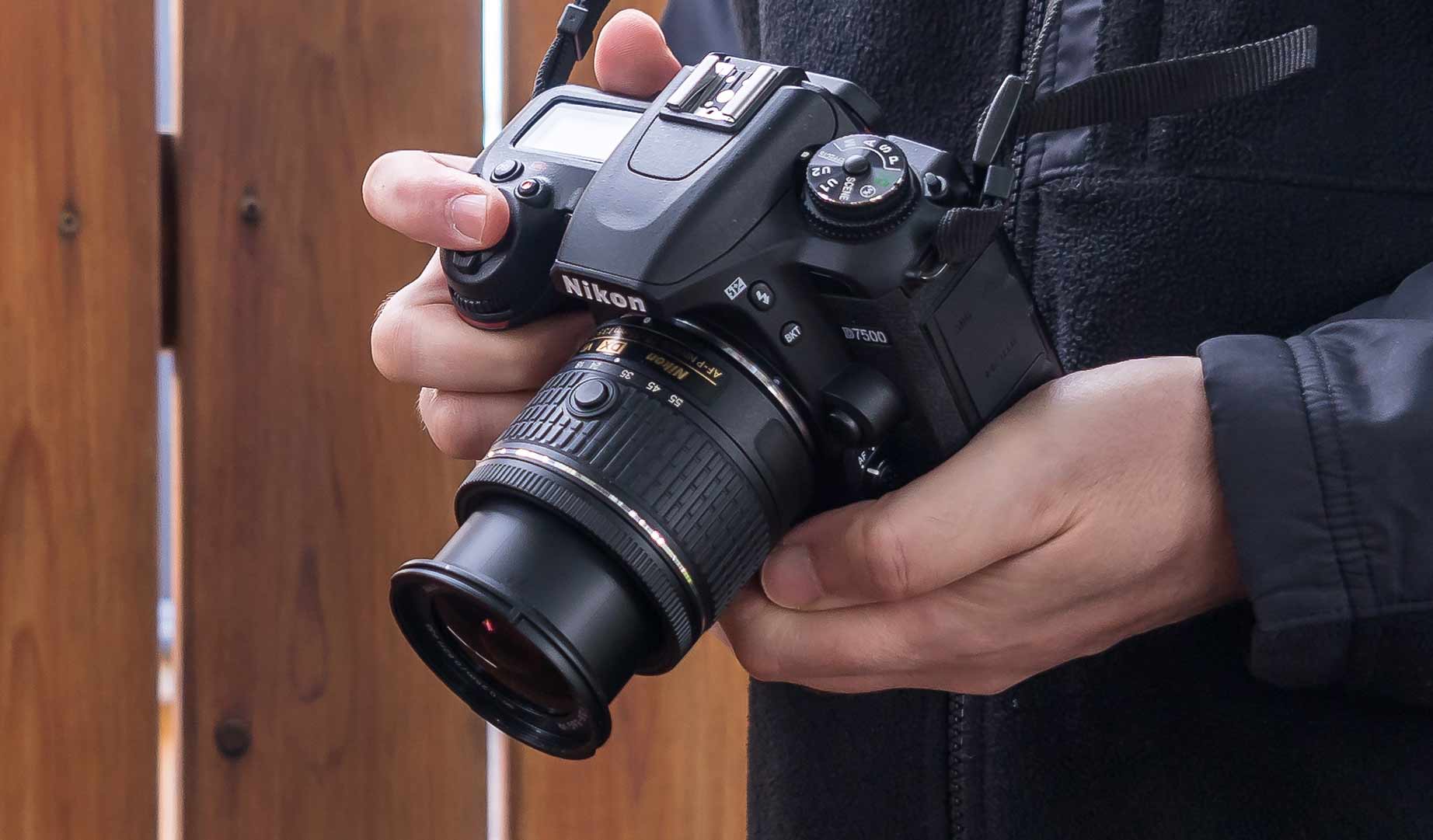
Entry-level: Nikon D7500 DSLR Camera
If you were to put the D7500 next to the D500 or D850, you would immediately notice several differences. While colours are the same, the D7500 is smaller, lighter and offers a contrasting set of buttons and dials. Chief among them is the dial that switches between the various photo modes. Some of them are automatic, while others are semi-auto, right on down to full manual.
This is a standard setup for most DSLRs, in that regard, the D7500 is designed to be accessible. The 3.2-inch LCD touchscreen offers touch focus and touch shutter, letting you capture photos without looking through the viewfinder or pressing the physical shutter. Pinch-to-zoom and full touch access to the menu and quick settings just adds to the smartphone-esque experience.
Nikon built the camera to be less intimidating in more ways than one. The dial has three different modes aimed at taking almost all of the guesswork out of shooting images. Auto is as hands-off as it gets, and is the most likely to kick up the onboard flash when lighting dims. Scene gives you 16 presets to try, ranging from portrait, sports, close-up, sunset, pet portrait, food and autumn colours. Effects adds 10 distinct visual cues, like night vision, super vivid, miniature effect, selective colour and silhouette, among others.
The D7500 has a 21-megapixel APS-C sensor with 8fps burst shooting and 4K video recording. Note that the sensor isn’t a full-frame one, like the D750 has, and there’s no image stabilization built into the body. You would need a lens that has that, which Nikon calls “vibration reduction.”

A step up: Nikon D750 DSLR Camera
The D750 preceded the D7500 by three years, so it misses some of the features the D7500 has, like a touch-enabled LCD and dual card slot, among others. The 24-megapixel full-frame CMOS sensor, amounting to a 2.3x the size of the D7500’s sensor. That gives you additional control over depth of field when shooting at the same focal length and aperture. However, the D750 has a fairly low ISO maximum of 12,800 compared to the D7500’s 51,200. You may not shoot often at those levels, but if it matters to you, that is a key stat.
The same goes for shutter speed, where the D750 maxes out at 1/4000 compared to 1/8000 for the D7500. Add the slightly slower 6.5fps burst shooting, and the D750 may not seem like it’s ideal for capturing fast action shots. With a touchscreen, focusing during video shoots is much easier, though I wasn’t convinced either camera was especially good at it.
I should also note the D750 is slightly wider, larger and heavier than the D7500 is. It’s a difference of 120 grams in weight, so not insignificant. Both work with Nikon’s F mount, meaning the same lenses will work on either camera.

Going “pro”: Nikon D500 DSLR Camera
Once you get to the Nikon D500, you’re into more professional territory. The automatic and preselected scene modes aren’t available here, with the full manual and semi-auto modes being the only options, like shutter priority, aperture priority, program and manual. To use this camera, you have to be comfortable with at least one or two of those modes to start with.
This camera is similarly juxtaposed to the D850. It has a 21-megapixel APS-C sensor with a slightly smaller and lighter body, along with a 3.2-inch touchscreen LCD. It has faster burst shooting at 10fps, but no focus bracketing to take multiples of the same shot at different focal points.
Like the D850, and unlike the other two Nikon cameras noted here, there is no built-in flash. Like the others, however, there’s also no in-body image stabilization, so lenses will have to handle that.
Bearing in mind this is a camera that came to market in 2016, Nikon did think ahead. The D500 has two memory card slots, including for a UHS-II card, so it has that in common with the D850.
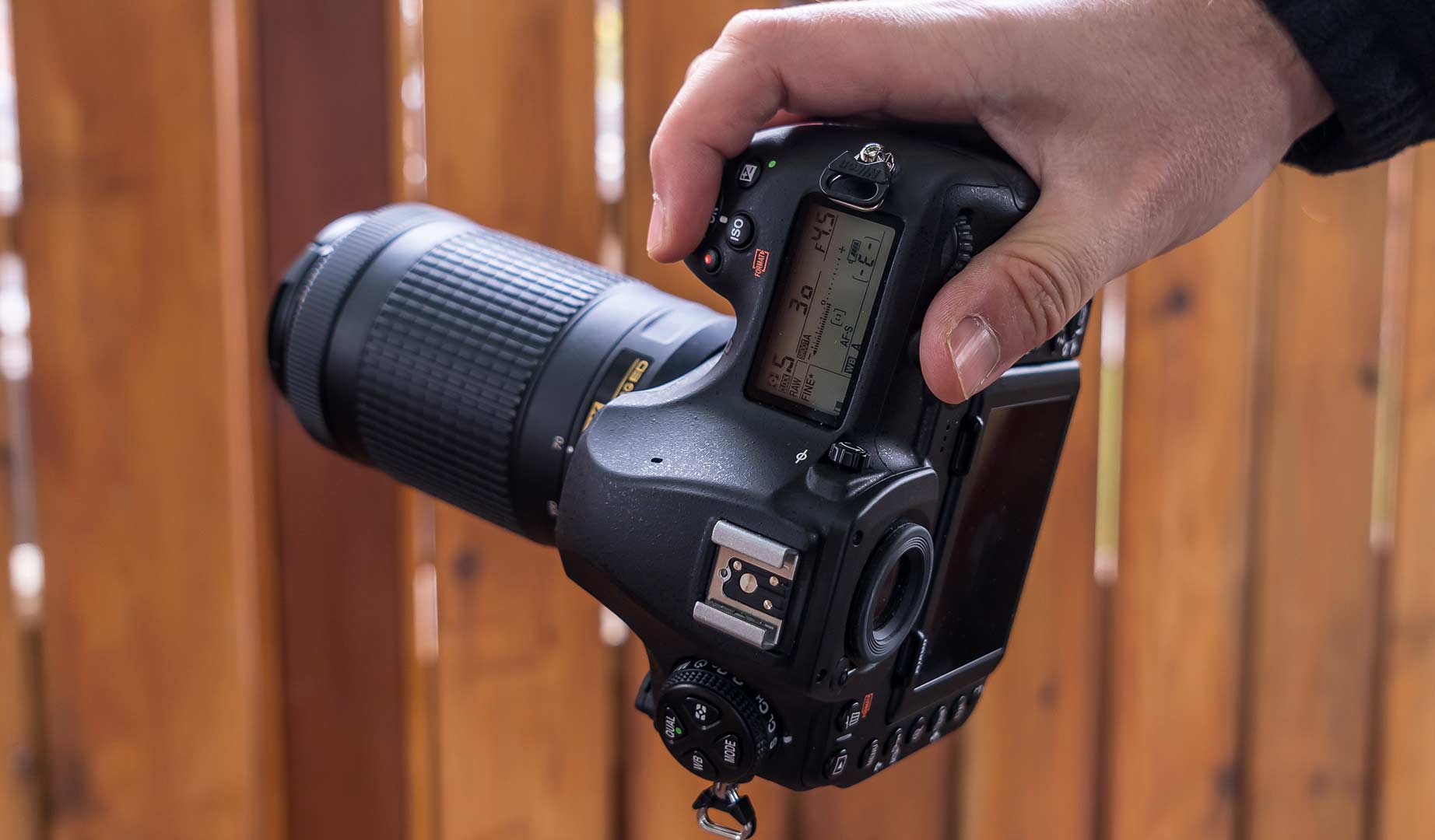
True pro: Nikon D850 DSLR Camera
The D850 is the most elite in this group, and frankly, it deserves to be. I liked the large 46-megapixel full-frame CMOS sensor for its ability to deal with photos in a variety of situations. While I would’ve liked a faster burst rate than 7fps, capturing action won’t be too difficult with the focus tracking on here. It’s just unfortunate that video isn’t quite at the same level.
Yes, the D850 will be slightly bigger and heavier than the D500, but I shot better photos with it. Depth of field and detail were clearer at wider points in the frame, reducing lens vignettes. Just about everything in the D500 is in this camera, only with improved prospects for overall composition.
It’s funny, too, because if you put the D850 next to the D500, there isn’t a huge difference between them, aesthetically speaking. It wouldn’t be immediately obvious which one was which from a short distance away.
I should note that while I’m pointing out how good the sensor is here, megapixels themselves don’t make a good camera. A good Nikon F mount lens is a big piece of the puzzle—and there are over 300 compatible ones. What makes the D850 so good is it has a significantly better battery life than the D500, and despite such similar specs, produces better results shot-for-shot.
Image quality
In my view, anyone interested in any camera in the league of the D500 or D850 already knows, or shoots, in RAW. I would argue that should also be the case with the D750 and D7500, even if it takes a little time to learn about it.
Post-production editing tools, like Adobe Lightroom, among others, can truly pull details from an image you didn’t realize were there. The D500, and especially the D850, are designed to shoot with a higher degree of control. When you know how to handle shutter speed, ISO, aperture and white balance, you can take photos in vastly different ways. The automatic options on the other two cameras are nice, but I believe you will feel like you’ve hit a new plateau when you can compose (and edit) shots based on your own eyes.
There is a feature Nikon includes called Active D-Lighting, and it processes extra dynamic range in highlights and shadows. The catch is that you can’t use it in any of the automatic modes, only the semi-auto and manual ones. It’s an image optimization that processes parts of a photo to pull out more detail in shadows and highlights. It’s kind of like having HDR built-in.
Nikon’s dozens of F mount lenses are a key part of the end result. I tested all four of these cameras using an 18-55mm and 70-300mm. They’re good lenses, but there are better, so as good as the photos I shot were, there’s room for better.
While I tried out the automatic modes, I always stuck with semi-auto or full manual. But that’s me. I’m experienced and comfortable with the features. If you aren’t, it’s worth learning them because it expands the limits of what you can achieve. Still, there’s nothing wrong with starting out on the automatic side first. Just try not to get too comfortable there because these cameras are capable of so much more.
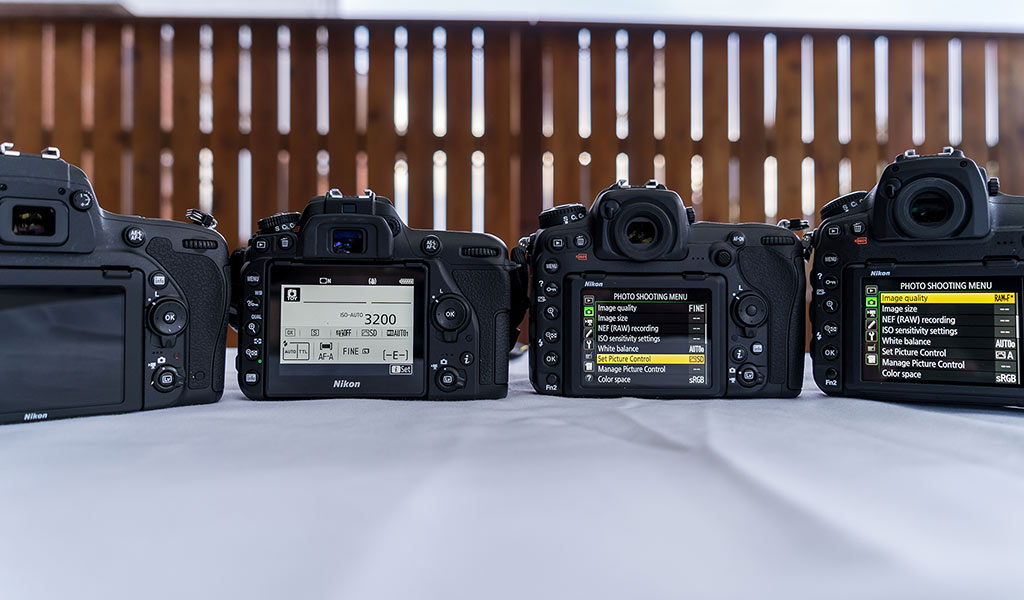
Picking the right DSLR camera
The smaller APS-C sensors on the D7500 and D500, respectively, made shooting in low-light a little more challenging. Often times, the larger the sensor, the more light you can pull in, explaining why the D750 and D850 were naturally better. Even with decent lighting, photos turned out darker on the preceding two cameras. Shooting in RAW and using a good app afterward can certainly help fix that. Note that the cameras compensate for lighting when you shoot in automatic modes.
If it were me, I would defer to a DSLR with a full-frame sensor, like the D750 and D850. The D750 offers better portability, whereas the D850 is more professional by design.
If you wanted something lighter and easier to understand out of the box, the D7500 or D750 isn’t a bad choice. In and of itself, it offers a graduated level of performance for the simple fact you can start with the automatic modes, and still learn the semi-auto and manual ones. The D500 is a mid-sized pro-level DSLR that does have some benefits, but if you’re ready to go to that level of photography, the D850 would be better, in my opinion.
Nikon’s menu system is fairly straightforward once you take time to learn where everything is. The button arrays on each camera can also shave off crucial seconds when making quick adjustments. For example, adjusting the autofocus (AF) is a button next to the lens at the front of the body. Hold that, and use the two scroll wheels to toggle the AF mode and focus type. Use the d-pad or joystick on the back to move your focal point when composing a shot.
Which should you choose?
That is a fundamental usability factor in all four of these cameras, and one that is only the start. There are a lot of goodies in all of them. I would refrain from going with the D500 or D850 if you’re looking for a good vacation camera. The D7500 or D750 would be better for those purposes.
If you care about where and how you shoot, the D500 or D850 are your best bets, though I will add the aforementioned caveat that you should be going in with some knowledge already.
Check out the latest DSLR cameras from Nikon, including the four models reviewed here.





